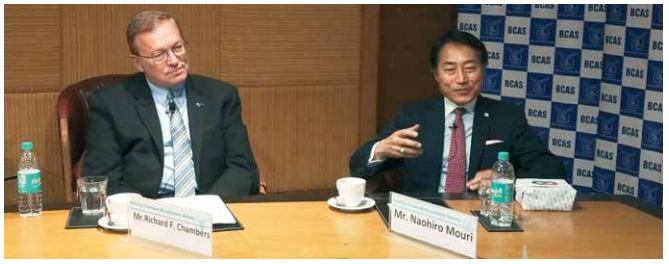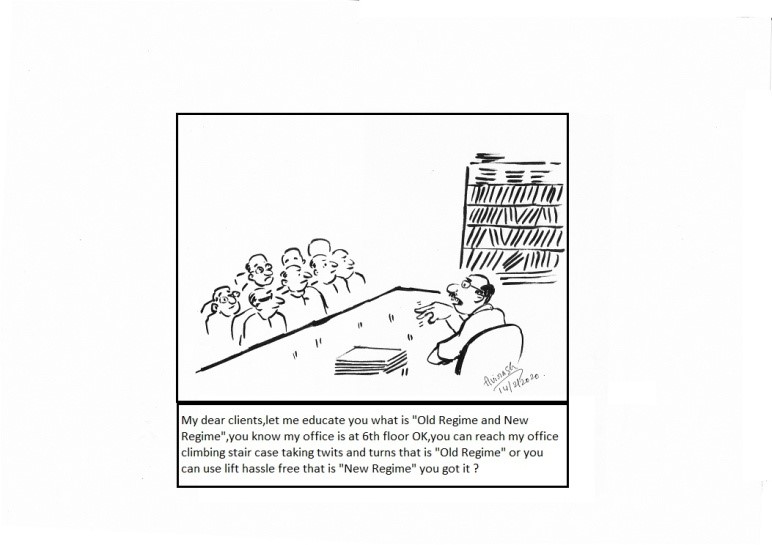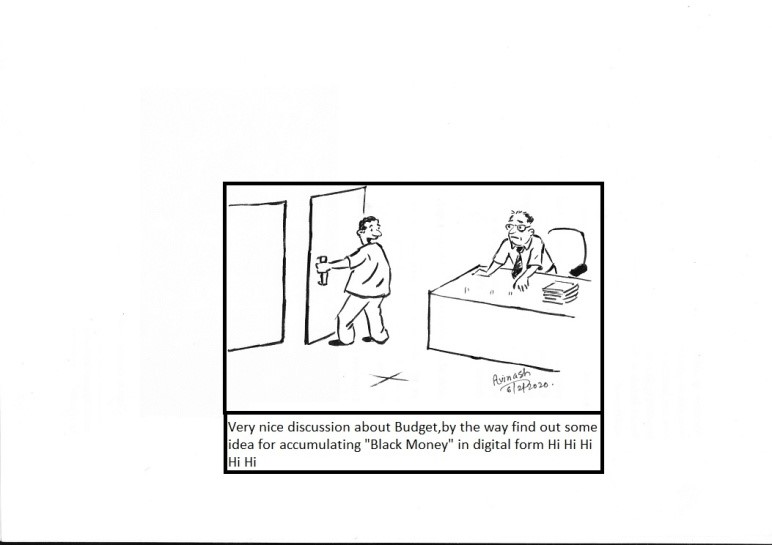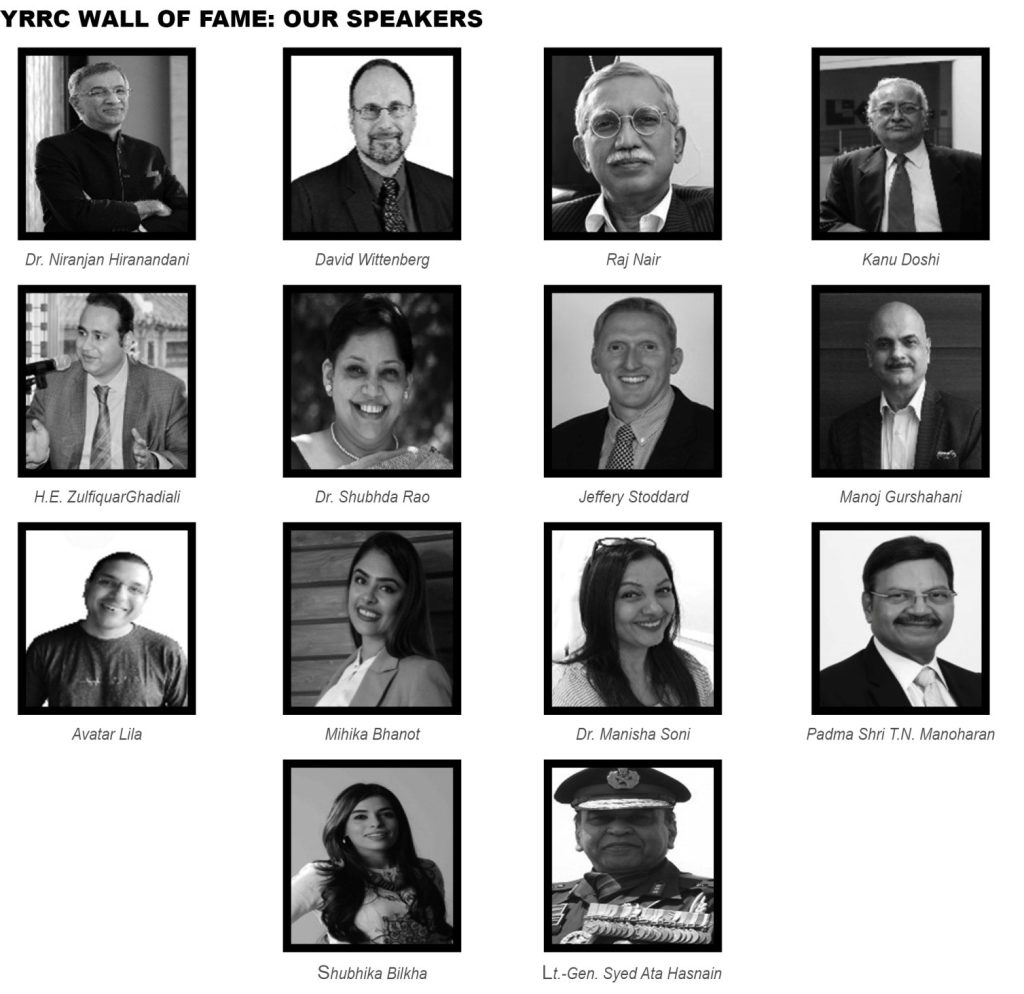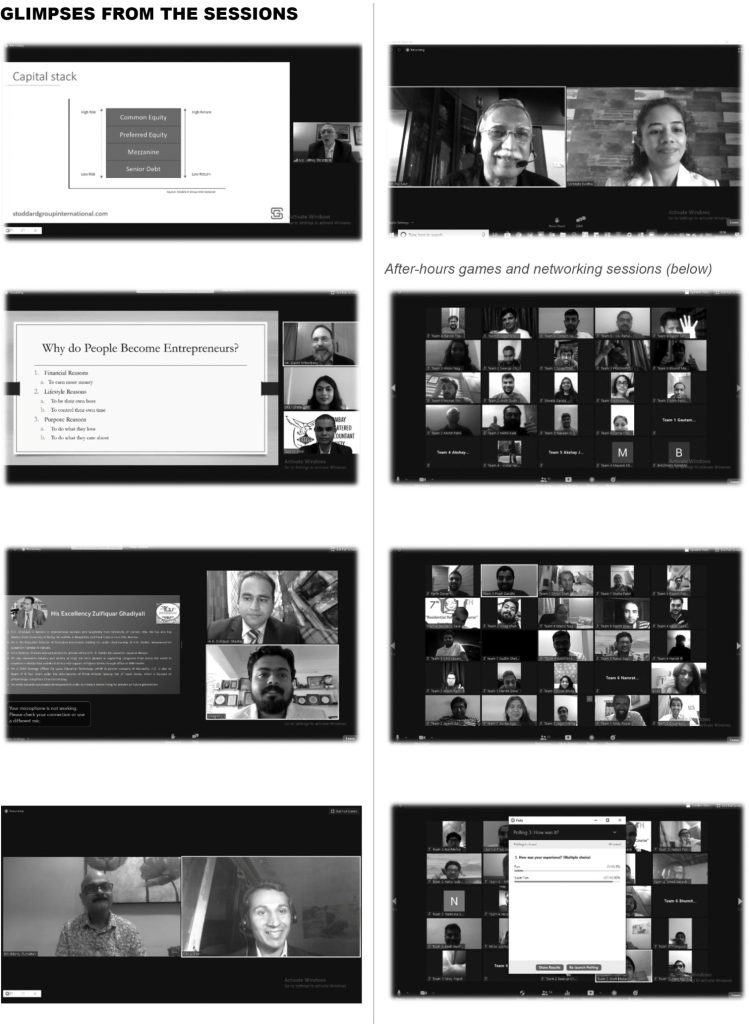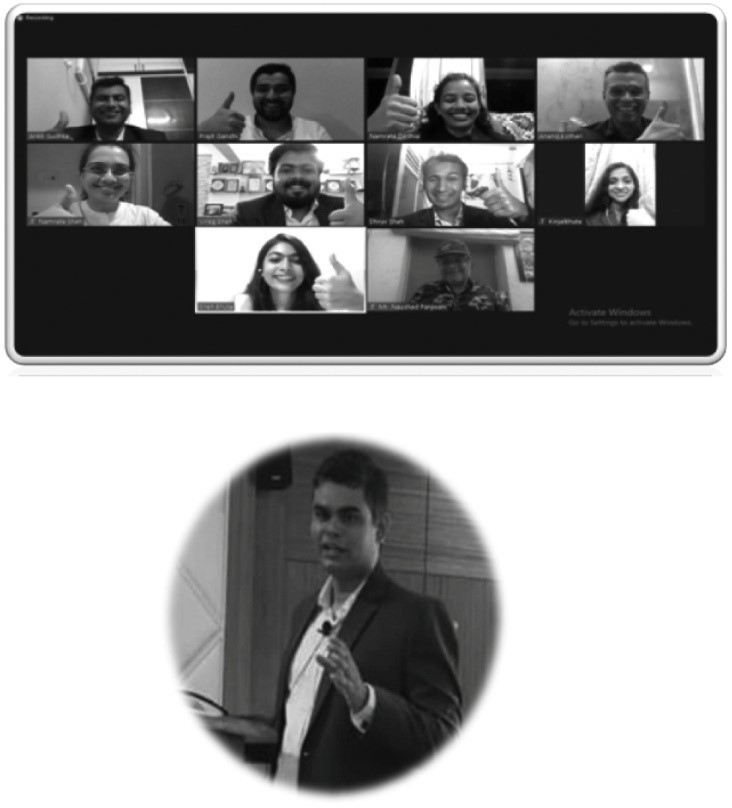5. Pr. CIT vs. NRA Iron and Steel Pvt. Ltd. (2019) 418 ITR 449 (SC)
Notice – Service of notice – Application for recall of ex parte
order – Service of notice on authorised representative – Section 2(35) defines
‘principal officer’ which includes agent of the company and the term ‘agent’
would certainly include a power of attorney holder – No ground for recall of
judgment
An application was filed for recall of the judgment for the A.Y. 2009-10
passed by the Supreme Court on the ground that the applicant company was not
served with the notice of the SLP at its registered office, nor was a copy of
the SLP served on the applicant company.
The applicants submitted that the court notices
were sent to the earlier registered office address of the company, i.e., at
310, 3rd Floor, B-Block, International Trade Tower, Nehru Place, New Delhi.
However, on 19th May, 2014, the company had changed its registered
office to 211, Somdutt Chambers II, 9, Bhikaji Cama Place, New Delhi 110066.
Thereafter, on 23rd January, 2019, the registered office was
again changed to 1205, Cabin No. 1, 89 Hemkunt Chambers, Nehru Place, New
Delhi.
The applicants submitted that they learnt of the judgment dated 5th
March, 2019 passed by the Court from a news clipping published in The
Economic Times on 7th March, 2019. Subsequently, the application
for recall was filed on 12th March, 2019.
The company submitted that on an inspection of the court record it
learnt that the affidavit of dasti service filed by the Revenue
Department on 19th December, 2018 showed an acknowledgement receipt
by Mr. Sanjeev Narayan, the chartered accountant of the applicant company, on
13th December, 2018.
The company also placed on record the affidavit of Mr. Sanjeev Narayan
wherein he had stated that he was the authorised representative of the company
before the Income Tax authorities but was not engaged before the High Court or
the Supreme Court. He submitted that he had received service on 13th
December, 2018 from one of the Inspectors of the Income Tax Department, but he bona
fide believed that the documents were ‘some Income Tax return documents
from Income Tax Department.’ He further submitted that he was suffering from an
advanced stage of cataract and had undergone surgery in both eyes, on 4th
January, 2019 and 23rd January, 2019, respectively.
The Department in its counter affidavit submitted that the dasti
notice was duly served on Mr. Narayan at his office address, in his capacity as
the authorised representative of the company who was holding a power of
attorney of the company for the A.Y. 2009-10. The POA appointed all four
partners of the firm, i.e., Mr. Mohan Lal, Advocate, Mr. Ashwani Kumar,
Chartered Accountant, Mr. Sanjeev Narayan, Chartered Accountant, and Mr.
Surender Kumar, FCA, as their counsel and authorised them to represent the
company at all stages of the proceedings. The POA executed by the company in
favour of Mr. Sanjeev Narayan was placed on record.
It was further submitted on behalf of the Revenue that even though Mr.
Narayan had stated that he underwent the cataract surgery on 4th
January, 2019 and 23rd January, 2019, this was much after the notice
had been served on 13th December, 2018. Further, Mr. Narayan had
appeared before the tax authorities after the date of service on 13th December,
2018, and prior to his surgery, to represent the company and its sister
concerns on the 14th, 21st, 28th and 29th
of December, 2018. In these circumstances, it was pointed out, there was no
merit in the contention raised by the company, and hence no ground was made out
to recall the judgment passed by the Supreme Court.
During oral hearing on the recall application, a submission was made by
the counsel for the company that Mr. Sanjeev Narayan was not the ‘principal
officer’ of the company and hence service could not have been effected upon
him.
* The Supreme Court noted that section 2(35) defines ‘principal
officer’, which includes agent of the company and the term ‘agent’ would
certainly include a power of attorney holder {State of Rajasthan vs.
Basant Nehata [2005 (12) SCC 77]}.
* It held that Mr. Narayan admittedly being the power of attorney holder
of the applicant (M/s. NRA Iron & Steel Pvt. Ltd.) for the A.Y. 2009-10,
was the agent of the company and hence notice could be served on him as the
agent of the company in this case.
* The Supreme Court observed that the ground taken by Mr. Narayan that
even though notice was served on 13th December, 2018, he assumed
that they were ‘some Income Tax return documents’ lacked credibility. It was
difficult to accept that the envelope containing the dasti notice from
this Court was considered to be ‘some Income Tax return documents’. Also, the
deponent had not disclosed as to whether the envelope containing the dasti notice
was ever opened. Further, the ground urged that the chartered accountant was
suffering from an advanced stage of cataract and hence was constrained from
informing his clients, was again not worthy of credence. The dasti notice
was served on him at his office on 13th December, 2018 which was
much prior to his surgery which took place on 4th January, 2019.
Furthermore, Mr. Narayan appeared before the Income Tax authorities to
represent the company and its sister concerns on various dates prior to his
surgery, i.e., on 14th, 21st, 28th and 29th
December, 2018.
The Supreme Court stated that keeping in view the above-mentioned facts
and circumstances, it was satisfied that the applicant company was duly served
through its authorised representative and was provided sufficient opportunities
to appear before the Court and contest the matter. The company chose to let the
matter proceed ex parte. The grounds for recall of the judgment were
therefore devoid of any merit whatsoever.
The Supreme Court dismissed the application for recall.
6. Pr CIT vs. I-Ven Interactive Limited (2019) 418 ITR 662 (SC)
Assessment – Change of address – Notice – In absence of any application
for change in address and/or change in the name of the assessee in the
Permanent Account Number database, the assessing officer would be justified in
sending the notice at the available address mentioned in the PAN database of
the assessee, more particularly when the return has been filed under e-module
scheme – Mere mentioning the new address in the return of income is not enough
– The change of address in the database of the PAN is a must
The assessee filed return of income for the A.Y.
2006-07 on 28th November, 2006 declaring total income of Rs.
3,38,71,716. The said return was filed under the e-module scheme and thereafter
a hard copy of the same was filed on 5th December, 2006. The return
of income was accompanied with the balance sheet and profit and loss account.
The return was processed u/s 143(1) of the Act. A notice u/s 143(2) of the Act
was issued to the assessee on 5th October, 2007. The notice was sent
at the assessee’s address available as per the PAN database. A further
opportunity was provided to the assessee vide notice u/s 143(2) on 25th
July, 2008. This notice was also issued at the available address as per the PAN
database. Thereafter, further notices u/s 142(1) were issued to the assessee on
23rd January, 2008, 25th July, 2008 and 5th
October, 2008 along with questionnaires calling for various details and were
duly served on the assessee company.
In response to the said notice, the representative
of the company appeared on 28th November, 2008 and 4th
December, 2008. The assessee participated in the proceedings before the AO.
However, the assessee challenged the notice under sections 143(2) and 142(1) on
the ground that the said notices were not served upon the assessee as the assessee
never received those notices and the subsequent notices served and received by
the assessee were beyond the period of limitation prescribed under proviso to
section 143(2) of the Act.
The AO vide assessment order dated 24th
December, 2008 completed the assessment u/s 143(3) by making disallowance of
Rs. 8,91,17,643 u/s 14A, read with Rule 8 of the Rules, and computed the total
income at Rs. 5,52,45,930.
Being aggrieved by the assessment order dated 24th
December, 2008, the assessee preferred an appeal before the learned C.I.T.
(Appeals). The C.I.T. (Appeals) allowed the appeal vide order dated 23rd
December, 2010 holding, inter alia, that the AO completed the assessment
u/s 143(3) without assuming valid jurisdiction u/s 143(2), and therefore the
assessment framed u/s 143(3) was invalid. The C.I.T. (Appeals) observed that as
the subsequent service of notice u/s 143(2) was beyond the period of limitation
prescribed under the proviso to section 143(2) and earlier no notices
were served upon the assessee and / or received by the assessee as the same
were sent at the old address, and in the meantime the assessee changed its
address, therefore the assessment order was bad in law. The Revenue preferred
an appeal before the Income Tax Appellate Tribunal which came to be dismissed
by the I.T.A.T. vide order dated 19th January, 2015. The orders
passed by the C.I.T. (Appeals) as well as the I.T.A.T. were confirmed by the
High Court.
Hence, the Revenue preferred an appeal before the
Supreme Court.
The Supreme Court noted at the outset that the
notice u/s 143(2) was sent by the AO to the assessee at the address as
mentioned in the PAN database on 5th October, 2007 and the same was
within the time limit prescribed in the proviso to section 143(2) of the
Act.
It recorded, however, that it was the case of the
assessee that the said notice was not served as the assessee had changed its
name and address and shifted to a new address prior thereto and therefore the
said notice was not served upon the assessee, and by the time when subsequent
notices were served, notice u/s 143(2) was barred by the period prescribed in proviso
to section 143(2). Therefore, the assessment order was bad in law. It was the
case on behalf of the assessee that vide communication dated 6th
December, 2005 the assessee had intimated to the AO about the new address and
despite this, the AO sent the notice at the old address.
The Supreme Court observed that the alleged
communication dated 6th December, 2005 was not forthcoming. Neither
was it produced before the AO nor before the Supreme Court. In the affidavit,
too, filed in compliance with the order dated 21st August, 2019, the
assessee has stated that the alleged communication dated 6th
December, 2005 was not available. Thus, the assessee had failed to prove the
alleged communication of that date. The only document available was Form No. 18
filed with the ROC.
The Supreme Court held that the filing of Form-18
with the ROC could not be said to be intimation to the AO with respect to
intimation of change in address. According to the Court, it appeared that no
application was made by the assessee to change the address in the PAN database
and in the PAN database the old address continued. Therefore, in absence of any
intimation to the AO with respect to change in address, the AO was justified in
issuing the notice at the address available as per the PAN database. Hence, the
AO could not be said to have committed any error; in fact, the AO was justified
in sending the notice at the address as per the PAN database. If that was so,
the notice dated 5th October, 2007 could be said to be within the
period prescribed in proviso to section 143(2) of the Act. Once the
notice is issued within the period prescribed as per the said proviso,
the same can be said to be sufficient compliance of section 143(2) of the Act.
And once the notice is sent within the period prescribed in the proviso
to section 143(2), in that case, the actual service of the notice upon the
assessee thereafter would be immaterial.
In a given case it may happen that though the
notice is sent within the period prescribed, the assessee may avoid actual
service of the notice till the period prescribed expired. Even in the case
relied upon by the Assessee [Asst. CIT vs. Hotel Blue Moon (2010) 321 ITR
362 (SC)], it was observed that the AO must necessarily issue notice
u/s 143(2) within the time prescribed in the proviso to section 143(2)
of the Act.
The Supreme Court, therefore, in the facts and
circumstances of the case, held that the High Court was not justified in
dismissing the appeal and confirming the orders passed by the C.I.T. (Appeals)
and the I.T.A.T. setting aside the assessment order solely on the ground that
the assessment order was bad in law on the ground that subsequent service of
notice upon the assessee u/s 143(2) was beyond the time prescribed in the
proviso to section 143(2) of the 1961 Act.
The Supreme Court, in the context of the
observations made by the High Court while concurring with the view of the
Tribunal that merely by filing of return of income with the new address it
shall be enough for the assessee to discharge its legal responsibility for
observing proper procedural steps as per the Companies Act and the Income Tax
Act is concerned, held that mere mentioning of the new address in the return of
income without specifically intimating the AO with respect to change of address
and without getting the PAN database changed, is not enough and sufficient.
In the absence of any specific intimation to the AO
with respect to change in address and / or change in the name of the assessee,
the AO would be justified in sending the notice at the available address
mentioned in the PAN database, more particularly when the return has been filed
under the e-module scheme. It is required to be noted that notices u/s 143(2)
are issued on selection of cases generated under the automated system of the
Department which picks up the address of the assessee from the database of the
PAN. Therefore, the change of address in the database of PAN is a must; in case
of change in the name of the company and / or any change in the registered
office or the corporate office, the same has to be intimated to the Registrar
of Companies in the prescribed format (Form 18) and after completing the said
requirement, the assessee is required to approach the Department with the copy
of the said document and the assessee is also required to make an application
for change of address in the Departmental database of PAN, which in the present case the assessee had failed to do.
Accordingly, the appeal was allowed by the Supreme
Court. The impugned judgment and order passed by the High Court, as well as the
orders passed by the C.I.T. (Appeals) and the I.T.A.T., were quashed and set
aside. The matter was remanded to the C.I.T. (Appeals) to consider the appeal
on merits on other grounds, in accordance with the law.

